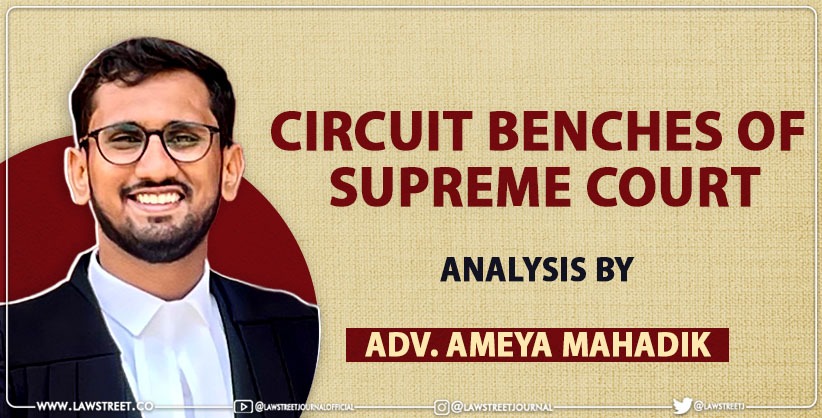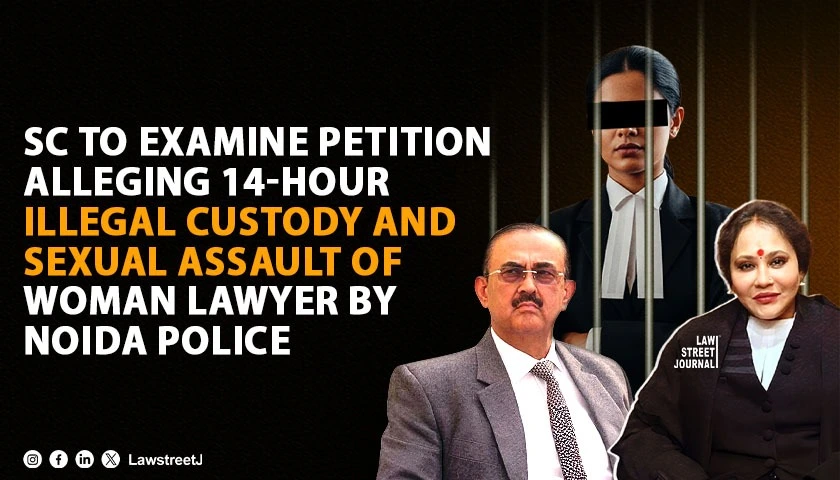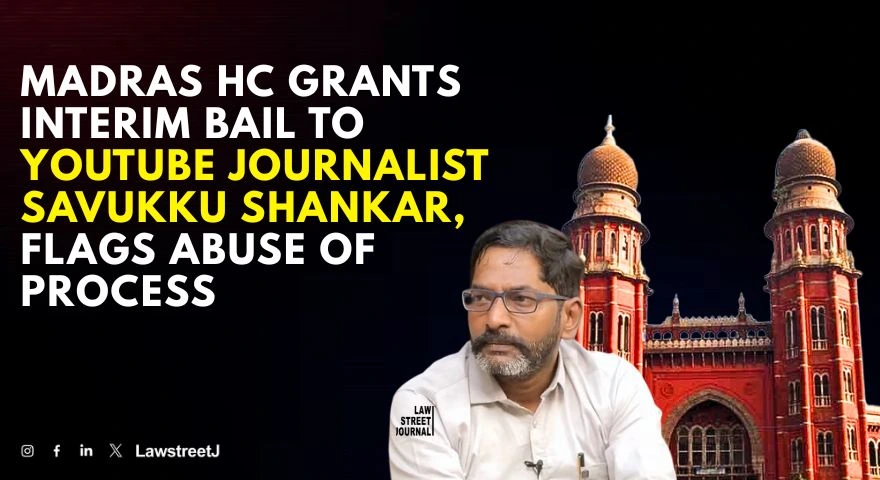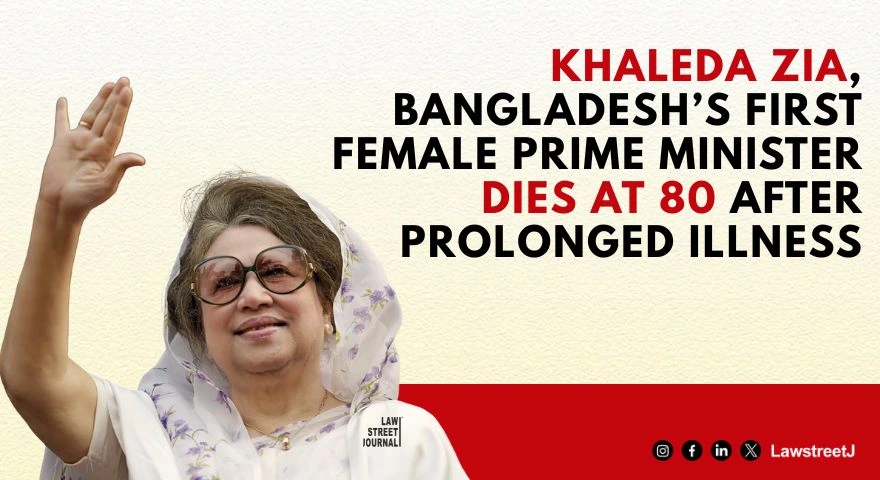PROS
The Draft Article 108A moved by Ambedkar read as follows: The Supreme Court shall sit in Delhi or at such other place or places, as the Chief Justice of India may, with the approval of the President, from time to time, appoint.
Dr. Ambedkar's amendment can be interpreted to mean that so long as the Supreme Court sits in Delhi, it will not have the right or the privilege to hold a circuit court anywhere else in the country. From this, it is implicit that the idea of circuit benches are is not new.
In 1986, the Supreme Court, in a judgment,[1] observed that it was 'desirable to set up a National Court of Appeal which would be in a position to entertain appeals by special leave from the decisions of the High Courts and the Tribunals in the country in civil, criminal, revenue and labour cases and so far as the present apex court is concerned, it should concern itself only with entertaining cases, involving questions of constitutional law and public law.'
In the year 1988, the Law Commission of India in its 125th report had said: The Supreme Court sits in Delhi alone. The Government of India on a couple of occasions sought the opinion of the Supreme Court of India for setting up a bench in the South. This proposal did not find favour with the Supreme Court. The result is that those coming from distant places like Tamil Nadu in the South, Gujarat in the West and Assam and other states in the East have to spend huge amounts on travel to reach the Supreme Court. And an adjournment becomes prohibitive.[2]
[1] Bihar Legal Support Society vs. Chief Justice of India
[2] https://lawcommissionofindia.nic.in/101-169/Report125.pdf
As per the latest 'statistics' released by the Supreme Court, there are 69,956 matters pending before it. Most of these matters are appeals filed against the judgments and orders of various High Courts and Tribunals. Among this 446 are Constitution Bench matters. One nine judge bench matter is pending since 2002.[1] Formation of regional benches spread out throughout the country would helping reducing the pendency of cases before the Honble SC.
The 95th, 120th, 125th, and 229th Law Commission reports have recommended setting up regional benches.
Most recent developments in international arena: Recently in 2014, Ireland established a new Court of Appeal whose chief function was to hear appeals from the high court and circuit court.
To summarize, the pros are as follows:
- Reduced cost for parties to appear before SC
- Overflowing case load for the judiciary can be reduced
- access to justice
- Currently, there are just 34 seats for judges on the Supreme Court, which is extremely low in contrast to the country's population. Even these 34 seats remain vacant, with only 31 judges, including the Chief Justice, occupying Supreme Court judicial seats. This inhibits the speedy administration of justice. The creation of regional benches will increase the number of Supreme Court judgeships and compel the government to nominate more judges for all four zones.
- A National/Regional Court of Appeal is an off-shoot of the Cassation Court model which operates largely in Europe. The model in India context would involve regional courts of India, Report No. 229 : Need for division of the Supreme Court into a Constitutional Bench at Delhi and Cassation Benches in four regions at Delhi, Chennai/Hyderabad, Kolkata and Mumbai, (5-8-2009), 6 located at various places to regularly and conclusively deal with appeals from the High Court regarding civil, criminal matters including matters regarding tax and service. This model, proposed by the Law Commission, seeks to reduce the burden of cases and improve the accessibility of courts of higher authority to the people, thereby adequately effectuating justice-rendering mechanisms.[2]
Other arguments in favour:
- The Supreme Court has strayed from its original character as a Constitutional Court and has merely converted itself as a regular court of appeal. It was shown that there was a cumulative annual growth of 6.8% every year, the trend signifies that the cases before Supreme Court almost doubles itself every year.[3]
- The difficulty and adversity of litigants was highlighted by showing the hardships faced by those staying far off from Delhi, where the Supreme Court is located. It leads to denial of justice and calls for serious attention to be given to setting up National/Regional Court of Appeal.[4]
- With the growing legal literacy, the number of cases presented before the Supreme Court is going to increase.[5]
The Court reiterated its stance taken in previous decisions in the case of Mathai v. Joby George, wherein the view was that Supreme Court, under Article 136, was not simply a regular court of appeal.[6] The jurisdiction of the Supreme Court under Article 136 is discretionary, and there is no vested right of appeal to a party in litigation. The Court analyzed concerns primarily pertaining to speedy disposal of cases to ensure efficient justice were raised.
CONS
- The argument against the concept of establishing regional benches of the Supreme Court is that it would dilute the sanctity of the Supreme Court and weaken the authority of its rulings. The enormous infrastructure costs of establishing these regional benches will result in a loss of both financial and human resources.
- Cost of setting up
- Additional cost of financial and human resources for maintenance and upkeep
- Virtual court systems render physical circuit benches redundant.
- The present day situation of delay in appointment of judges of High Court as well as lack of number of benches of High Court also renders hindrance to the concept of circuit benches and should be dealt on primary importance.
- It may also result in conflicts of views of this regional benches, thereby affecting the litigants by further delays.
OTHER JURISDICTIONS
During the analysis of the Constitutional feasibility of the National Court of Appeal, in Vasanthakumar, the Supreme Court took into consideration the arguments of Senior Advocate, KK Venugopal which were in favour of the creation of a National Court of Appeal.[7] One of his arguments was centered around the premise that, in Ireland, a separate Court of Appeal had been set up to deal with the problem of over-burdening of cases with the Supreme Court and to mete out the expedient disposal of cases for the efficient delivery of justice.[8]
- Kenyan Constitution, 2010.
- The Court of Appeal of Kenya is established under Article 164 of the constitution of Kenya to handle appeals arising from High Court as well as any other court or Tribunal as provided for in Law.
- The court comprises a maximum of 30 Judges.
- The Judges of the Court of Appeal elect a President from among themselves.
- The Court of Appeal holds sitting in six places: Nairobi, Mombasa, Nyeri, Kisumu, Nakuru and Eldoret.
- Structure: The Supreme Court of Kenya, which holds sittings in its building at Nairobi, has exclusive original jurisdiction to hear and determine disputes relating to the elections to the office of President. It can also hear appeals from the Court of Appeal if it involves interpretation or application of the Constitution. A matter certified by the Supreme Court or the Court of Appeal as one that involves a matter of general public importance is also appealable before it. It can also render advisory opinion at the request of the National Government, any State organ, or any County Government, determine the validity of a declaration of a state of emergency, and hear appeals from a tribunal constituted for removal of Judges from office.
- Irish Judicial System
- The Court of Appeal which was established on the 28th October in the year 2014 enjoys the space of an appellate jurisdictional tier between the Supreme Court and the High Court.
- The Court of Appeal Act, 2014 was enacted under the Constitutional mandate of paragraph (ii) of Article 34.2 of the Irish Constitution.
- This Court was set up to function as a superior court of record with such appellate jurisdiction as is prescribed by the Constitution.
- To ensure that the Supreme Court and the Court of Appeal would not be weighed down by the number of cases in precisely the same way as the Supreme Court was burdened prior to the establishment of the Court of Appeal, the judges of both Courts were encouraged to adhere to the doctrine of Judicial Restraint.
- Even though the Court of Appeal is subordinate to the Supreme Court, this system establishes its importance and significance to the three-tiered system.
- Germany
- Germany, is a prime exhibit of the co-existence of a Constitutional and Cassation Court system in a concurrent manner. The German Constitutional system provides a sound basis to understand the Constitutional feasibility of such a model within the Indian paradigm.
- The German Constitutional Court, the Bundesverfassungsgericht, was one of the first of its times after the post-war era in Europe. Initially, it faced a lack of precedent and there was conflict in terms of procedure for judicial review, however, its establishment after a ten year period solidified its powers and jurisdiction
- As per the German Constitutional Court system, the Constitutional Court is the highest organ of judicial authority in the country. It protects the constitutionality and legality of every administrative decision, protects human rights and fundamental freedoms. The Constitutional Court's jurisdiction is however, restricted to the investigation of merely constitutional questions and the legal determination thereof to a complex set of facts to and evidence.
- The following elements have been noted to be characteristic features of a constitutional appeal:
- A system of prior selection which allows the Constitutional Courts to sift out potentially unsuccessful appeals by procedure established by law.
- The subject matter of such appeals generally tends to be centered around constitutional rights and freedoms which are guaranteed to all citizens of the nation
OPINION OF AUTHORS OF ARTICLES
while it is known a successful working system of a Regional or National Court of Appeal would be complex and would require utmost precariousness in its initial years, it can be certain that it would go a long way in solving the problems of over-burdening of cases at the Supreme Court level due to what has recently been described by eminent jurists such as K.K. Venugopal, as a lack of caution exercised by the Supreme Court in allowing appeals from Article 136. Moreover, this would also enable people from different corners of India to avail the justice that it enshrined by the Constitution in a speedy and efficient manner.[9]
LIST OF JURISDICTIONS WHERE APEX COURTS OF VARIED JURISDICTIONS FUNCTION
- South Africa
- 'Supreme Court of Appeal' to deal only with cases sent to it from the High Courts.
- The Constitutional Court is South Africa's highest court on constitutional matters.
- Uganda,
- Supreme Court hears appeal from Court of Appeals and Constitutional Court.
- Court of Appeals
- Constitutional Court.
- Austria
- Austria established the worlds first separate constitutional court in 1920
- Constitutional Court of Austria,
- Supreme Court of Justice,
- Administrative Court of Austria
- Albania
- Constitutional Court of Albania
- 3 members appointed by the President
- 3 members elected by 3/5 of the Assembly
- 3 members elected by the High Court
- Supreme Court of Albania
- Appointed by President with consent of Parliament
- Constitutional Court of Albania
- Algeria
- Constitutional Court of Algeria
- 4 members appointed by President
- 2 elected by Supreme Court
- 2 elected by Council of State
- Supreme Court of Algeria
- Appointed by executive.
- Constitutional Court of Algeria
- Angola
- Constitutional Court of Angola
- Supreme Court of Angola
- China
- Supreme People's Court, Beijing
- Premier appellate forum of the land
- Court of last reort
- Supervise administration of justice
- Set up 5 circuit courts outside state capital
- Standing Committee of the National People's Congress (de facto, Hong Kong and Macau),
- Court of Final Appeal (de jure, Macau),
- Court of Final Appeal (de jure, Hong Kong)
- Supreme People's Court, Beijing
- Czech Republic
- Constitutional Court of the Czech Republic
- Hears cases of constitutionality
- Supreme Court of the Czech Republic
- Highest court of appeal
- Sits in panel consisting of a Chairman and 2 judges or it sits in Grand Panels of the divisions.
- Supreme Administrative Court of the Czech Republic
- Hears cases of administrative law
- Constitutional Court of the Czech Republic
- France
- Constitutional Council
- Highest constitutional authority
- Court of Cassation
- One of the 4 courts of last resort
- Criminal and civil jurisdiction
- Council of State
- Legal advisor to executive branch
- Supreme court of administrative justice
- Court of Audit
- Administrative court
- Cour de Justice de la Rpublique
- Cases of ministerial misconduct
- Constitutional Council
- Germany
- Federal Constitutional Court
- Supreme Constitutional court
- Federal Court of Justice
- Highest court in system of ordinary jurisdiction.
- Last court in criminal and private law
- Federal Administrative Court
- Generally all cases of administrative law
- Federal fiscal Court
- Article 95 of Basic law
- Last court in tax and customs matters
- Federal Labour Court.
- Federal Social Court.
- Federal Constitutional Court
- Italy
- Constitutional Court of Italy
- Supreme Court of Cassation
- Luxembourg
- Constitutional Court,
- Superior Court of Justice,
- Administrative Court
- Myanmar
- Constitutional Tribunal of Myanmar,
- Supreme Court of Myanmar,
- Portugal
- Constitutional Court of Portugal,
- Supreme Court of Justice
- Russia
- Constitutional Court of Russia,
- Supreme Court of Russia
- South Africa
- Constitutional Court of South Africa,
- Supreme Court of Appeal of South Africa
- South Korea
- Constitutional Court of Korea,
- Supreme Court of Korea
- Spain
- Constitutional Court of Spain,
- Supreme Court of Spain
- Sweden
- Supreme Court of Sweden,
- Supreme Administrative Court of Sweden
- Turkey
- Constitutional Court of Turkey,
- Court of Cassation,
- Council of State,
- Court of Jurisdictional Disputes
- Ukraine
- Constitutional Court of Ukraine,
- Supreme Court of Ukraine
- United Kingdom
- Supreme Court of the United Kingdom,
- High Court of Justiciary (ScotlandCriminal Appeals concerning violations of the Human Rights Act 1998 may be heard in the Supreme Court alongside civil cases),
- Judicial Committee of the Privy Council
- USA
- Supreme Court of the United States,
- State supreme courts
- Uzbekistan
- Constitutional Court of Uzbekistan,
- Supreme Court of Uzbekistan
- Zambia
- Constitutional Court of Zambia,
- Supreme Court of Zambia
- Zimbabwe
- Constitutional Court of Zimbabwe,
- Supreme Court of Zimbabwe
The Author is an advocate practicing in the Supreme Court of India. The views expressed are personal to the author.
[1] https://main.sci.gov.in/statistics
[2] 3.3 CALQ (2017) 90 The Supreme Court : To Change or Not to Change? An Analysis of the Proposed Idea of National/Regional Court of Appeal
[3] V. Vasanthakumar v. H.C. Bhatia, (2016) 7 SCC 686.
[4] V. Vasanthakumar v. H.C. Bhatia, (2016) 7 SCC 686.
[5] V. Vasanthakumar v. H.C. Bhatia, (2016) 7 SCC 686.
[6] Mathai, supra note 9. 3; Vasanthakumar, supra note 25, 18; See also Bengal Chemical & Pharmaceutical Works Ltd. v. Employees, AIR 1959 SC 633; Kunhayammed v. State of Kerala (2000) 6 SCC 359; State of Bombay v. Rusy Mistry, AIR 1960 SC 391; Municipal Board, Pratabgarh v. Mahendra Singh Chawla, (1982) 3 SCC 331; Ram Saran Das and Bros. v. CTO, AIR 1962 SC 1326; Pritam Singh v. State, AIR 1950 SC 169; Tirupati Balaji Developers (P) Ltd. v. State of Bihar, (2004) 5 SCC 1; Jamshed Hormusji Wadia v. Port of Mumbai, (2004) 3 SCC 214; Narpat Singh v. Jaipur Development Authority, (2002) 4 SCC 666; Ashok Nagar Welfare Assn. v. R.K. Sharma, (2002) 1 SCC 749.
[7] V. Vasanthakumar v. H.C. Bhatia, (2016) 7 SCC 686
[8] V. Vasanthakumar v. H.C. Bhatia, (2016) 7 SCC 686
[9] 3.3 CALQ (2017) 90 The Supreme Court : To Change or Not to Change? An Analysis of the Proposed Idea of National/Regional Court of Appeal







S.Muruganandam Aug 30, 2022
Our Country need Court of Appeal in Chennai, Mumbai/Ahmadabad, Calcutta and in a North East. This will not only save the Time& energy of the Citizens and also they will get their Judgment in Time.